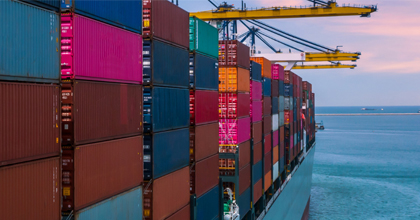In the Inflation Exploration blog series, Mintel explores all the ways that inflation effects consumers around the globe.
Concern in APAC is muted, but could worsen
Consumers in APAC are not overly concerned, yet. But rising costs of food, especially, could create more hardship for people, especially those on lower incomes, and more help from brands is likely to be needed.
According to the International Monetary Fund and Organisation for Economic Co-operation and Development, overall growth in the APAC region is expected to be weakened at best, with few areas of recovery in the next 18 months, with the notably optimistic case of Thailand. Inflation is expected to rise across the APAC region in 2022, with recovery to 2021 levels forecast to occur in 2023.
Presently, inflation is beginning to have a direct effect on consumers in the Asia-Pacific region. According to Mintel’s financial tracker research in Australia, India, Japan and Thailand, 40-42% of consumers are unconcerned about the current economic situation, yet almost the same proportion are concerned but feel they will be okay. However, some 14-15% are ‘really worried’.
In May 2022, 46% of consumers in those markets felt that the impact of the Ukraine conflict would have a small impact on their household finances, but 29% said it would have a major impact.
Already, Mintel is seeing consumers react by reducing non-essential spending on things like travel, clothes/fashion, beauty/grooming routines and dining out. They are dipping more into their savings, seeking more value from budget retailers, and stocking up on cupboard fillers.
There are practical steps brands can take to help
Brands can help by doing a range of different things.
Brands can make the effort to be transparent when explaining price increases, whether they are due to rising costs or maintaining product quality. Mintel found that about 80% of consumers across the APAC region said they agree that they would be loyal to brands that are transparent with customers (eg explaining why they increased prices) when shopping for food, for example.
They can link necessary price increases to a customer-centric value narrative, whether that is safety, wellbeing, nutrition, etc.
Brands can give consumers warnings about price rises well in advance to give them the opportunity to stock up before the price rises.
It is worthwhile pushing the durability, long-lasting, multi-use nature of their products to show consumers how they will only need to buy one product to cover different needs over a longer time will be in demand.
Consumers are reconsidering the value of basic life skills as the purpose of learning them expands beyond survival and practicality into being sustainable, trendy and rewarding. Brands can therefore help consumers to attain those life hacks that will help them out – giving them the sense of satisfaction and achievement of learning something new (and shareable on social media) can help create a positive, ‘helping hand’ brand image.
There is also an opportunity for brands to increase their value perception by focusing on design/aesthetics, functionality, social responsibility, exclusivity, limited editions, etc.
If in doubt, do the right thing!
Social responsibility and being there as a ‘helping hand’ are not to be underrated. In times of hardship, it will be the brands that helped them and their communities in hardship that consumers will lean towards with their loyalty, long after the hard times recede – and they will recede!
Demonstrate how your brand works for the common good of all, keeping costs and prices down, maintaining quality to protect consumers, or standing up for good causes in the communities within which brands are active members.
For example, McDonald’s Philippines introduced McSavers Mix and Match, which allows customers to customise their snack combo at a single price point of 75 Philippine pesos (approximately US$1.40).
Consumers also still want brands to push the sustainability issue and make it easier for them to be sustainable on a budget.
Technology brands can help reduce waste, for instance. Chinese second-hand goods platform Xianyu held a matchmaking fair for single AirPods that were no longer part of a pair (China). Collaboration between brands can be a great way to achieve sustainable ends. For example, Samsung is working with Patagonia to develop a washing machine that will limit microplastic waste and minimise the amount of water used (Korea/US).
In short, consumers are looking to brands to take the lead in providing solutions, and there is much that brands can do to help out.

































